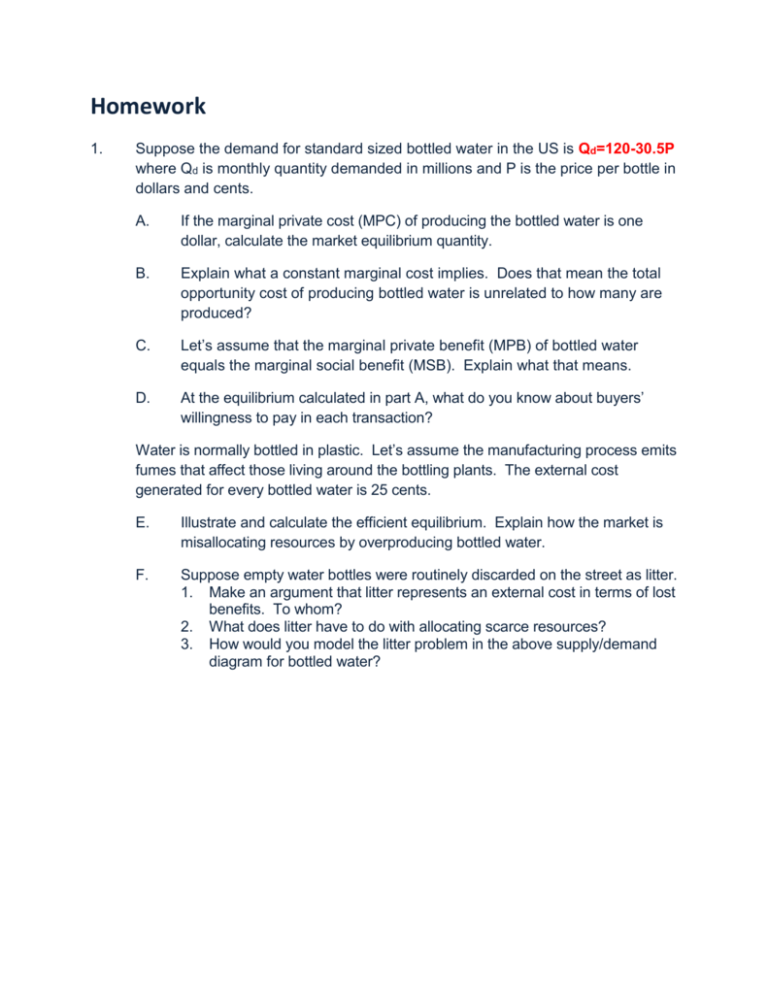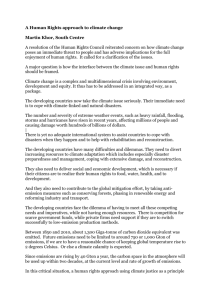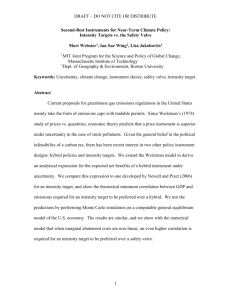hw - Cal State LA - Instructional Web Server
advertisement

Homework 1. Suppose the demand for standard sized bottled water in the US is Qd=120-30.5P where Qd is monthly quantity demanded in millions and P is the price per bottle in dollars and cents. A. If the marginal private cost (MPC) of producing the bottled water is one dollar, calculate the market equilibrium quantity. B. Explain what a constant marginal cost implies. Does that mean the total opportunity cost of producing bottled water is unrelated to how many are produced? C. Let’s assume that the marginal private benefit (MPB) of bottled water equals the marginal social benefit (MSB). Explain what that means. D. At the equilibrium calculated in part A, what do you know about buyers’ willingness to pay in each transaction? Water is normally bottled in plastic. Let’s assume the manufacturing process emits fumes that affect those living around the bottling plants. The external cost generated for every bottled water is 25 cents. E. Illustrate and calculate the efficient equilibrium. Explain how the market is misallocating resources by overproducing bottled water. F. Suppose empty water bottles were routinely discarded on the street as litter. 1. Make an argument that litter represents an external cost in terms of lost benefits. To whom? 2. What does litter have to do with allocating scarce resources? 3. How would you model the litter problem in the above supply/demand diagram for bottled water? 2. Suppose a power generating plant emits particulates that damage crops and affect human health. The relationship between emissions and environmental damage is represented by the marginal damage function, MD=9e where e represents tons of emissions per month. The cost to the firm (and society) of eliminating emissions is represented the marginal abatement cost function, MAC=108.5 - 6.5e Both MD and MAC are dollar costs per month. A. If the power generating firm were allowed to ignore the social cost of its emissions, what would be the firm’s monthly emission level? B. Calculate the socially efficient level of pollution. C. If the emissions calculated in part B is a level found to shorten some peoples’ lives, could it still be considered socially efficient? D. Suppose the EPA set an emission standard at the socially efficient level calculated in part B. Calculate the cost to the firm of achieving this standard. E. Suppose that instead of a standard, the EPA charged an emissions tax. What tax rate would it set? F. Calculate the total cost to the firm if efficiency is reached through the use of an emissions tax. Explain why it would be less costly for the firm if it were regulated by an emissions standard as opposed to a tax. Suppose the firm found a new, less costly process for reducing emissions. Its marginal abatement costs has changed to MAC=100 - 5.99e G. What is the efficient level of emissions? H. If the firm were charged the tax rate calculated in part E, calculate the firm’s emissions with the new MAC. Is the firm now emitting less than the efficient level of pollution? I. If the previous emission standard were instead maintained, would the firm now be polluting too much? 3. Below are the marginal abatement costs for three firms. Suppose the EPA wants to limit total emissions across firms to fifteen tons per week. A. Calculate total abatement costs across firms if the EPA uses an emissions standard limiting each firm to five tons per week. B. Calculate total abatement costs across firms if the EPA achieves its goal by charging an emissions tax of eight dollars/ton. C. Explain the difference in total abatement costs. Why does the emissions standard generate greater opportunity cost to society than the emissions tax? D. In a scenario with multiple firms, under what circumstances would an emissions standard generate the same total abatement cost as an emissions tax?










